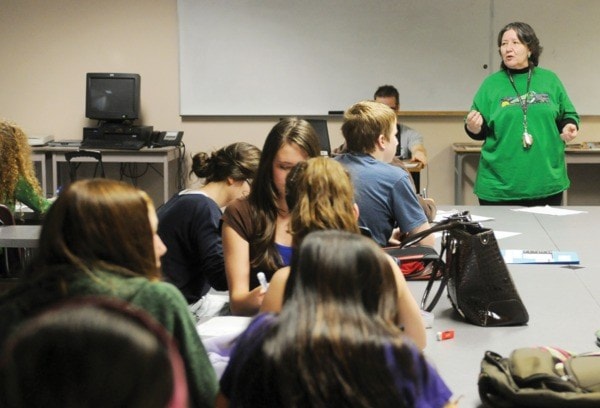Nina Fowell instructs a class of perplexed eight graders to take notes without words.
As she begins reading a paragraph about marauding Mongol warriors, heads turn, foreheads furrow and students look a tad confused.
“I want you to take notes in pictures,” explains the Thomas Haney teacher, as students scribble a village and tents and sketch out tiny Mongolian men.
Fowell is used to the flummoxed faces. Since she started using graphic novels as a teaching tool three years ago, she knows takes a while for their brains to adjust.
“We have two side of our brain - one that is more logical and one that is more creative and artistic. This way we get to stimulate both parts of the brain,” she says.
Popular with kids and young adults, graphic novels integrate images and text to tell a story than would not be possible with only a single medium: they’re a whole new way to read.
With titles and topics that range from historical to the profane and everything in between, readership of graphic novels has steadily increased in the past decade.
In 2009, the total market for the visual medium was $680 million dollars, with $370 million in graphic novel sales and $310 million in comics.
“Sometimes there are kids that need to present their knowledge visually,” says Fowell, who figured out pictures enhanced the reading experience when she began reading comic books with her son more than two decades ago.
Since then she’s used snippets of visual information while teaching in elementary and now high school.
When she opened Sector 2841, comic and toy store, in Maple Ridge three years ago, she began sharing her knowledge in earnest.
Fowell uses graphic novels not only to enhance the reading experience and help kids takes notes, but as a tool to improve memory.
“In real life, they have to write exams that don’t have visuals,” she says.
“It’s getting them to that exam in ways where they can visualize what they are doing and help them to remember information that they would not remember if they just read it.”
She’s helped students who were terrified of essays and words craft long projects by getting them to present information both visually and in written form.
“It’s knowledge in another form than just writing,” says Fowell.
“It takes the fear out of it. They know there are other options. It opens up a world to kids.”
• To learn more about Nina Fowell’s graphic novel workshops or book her to deliver one at your school or library, email nfowell@shaw.ca or call 604-240-5032 or 604-467-4913.
